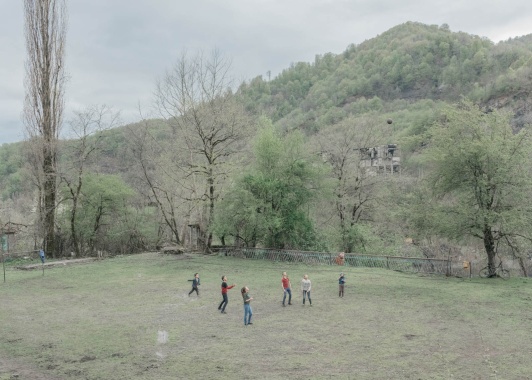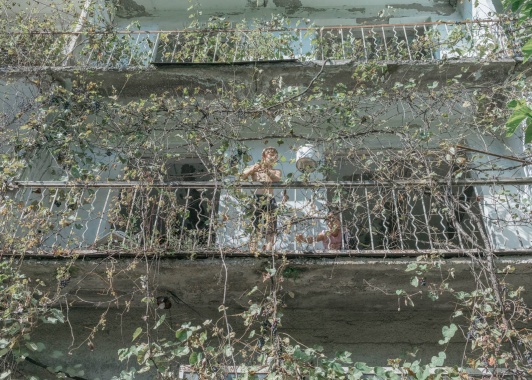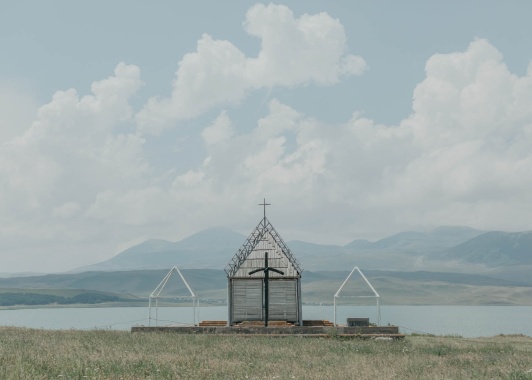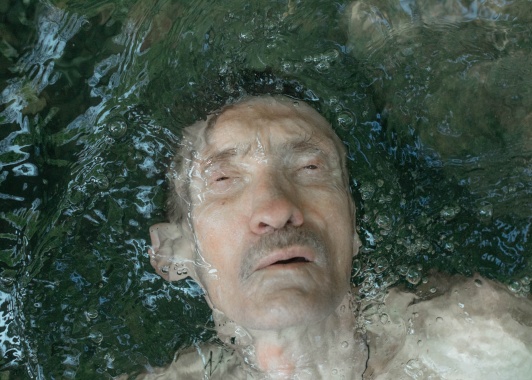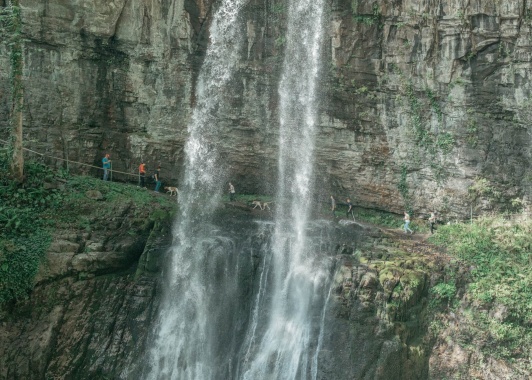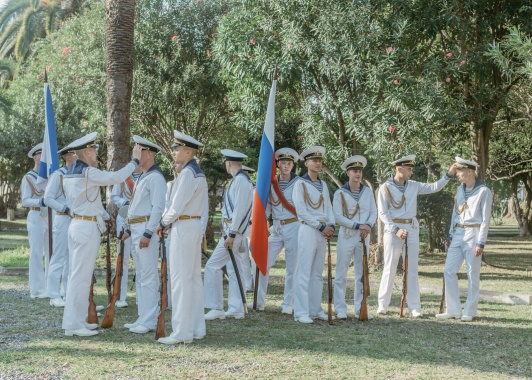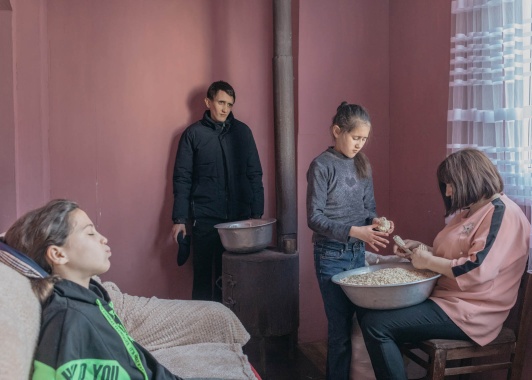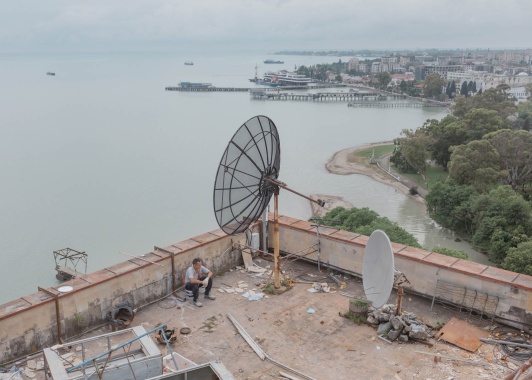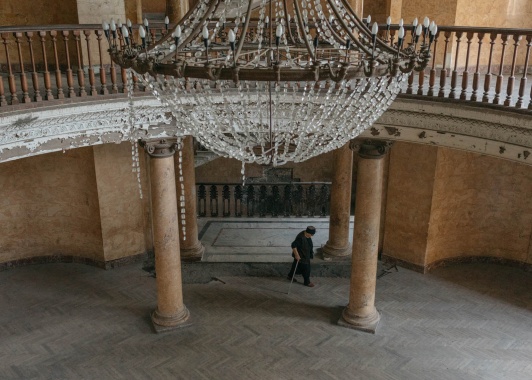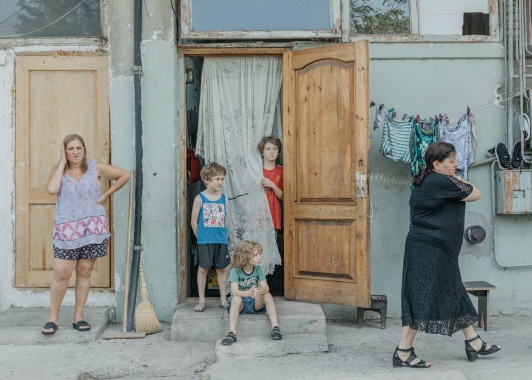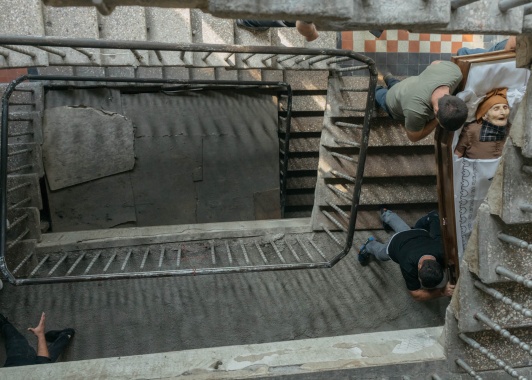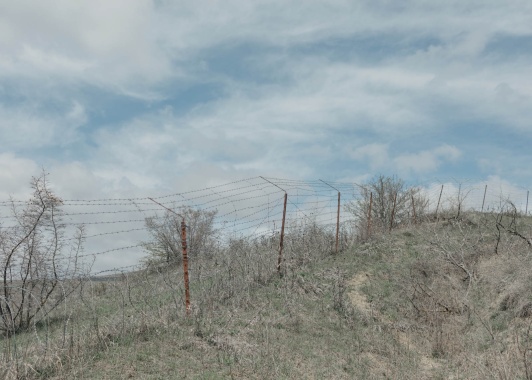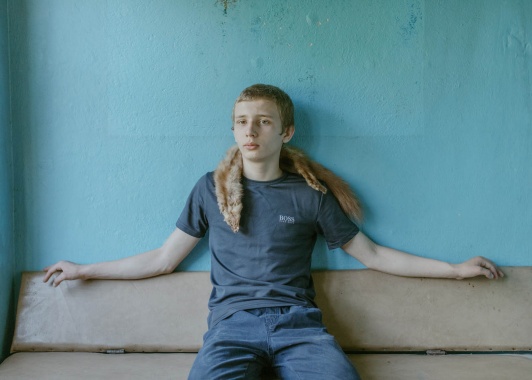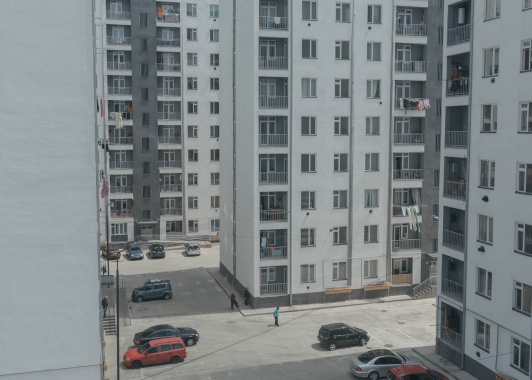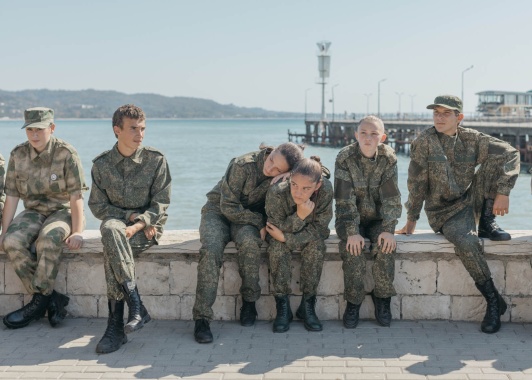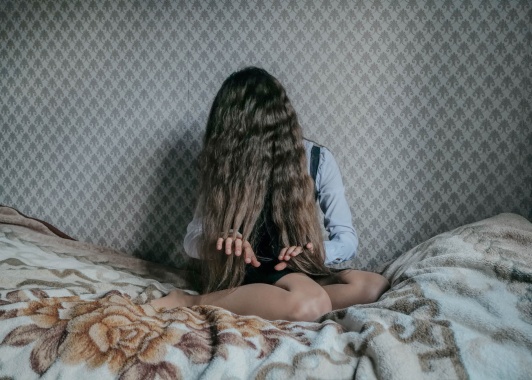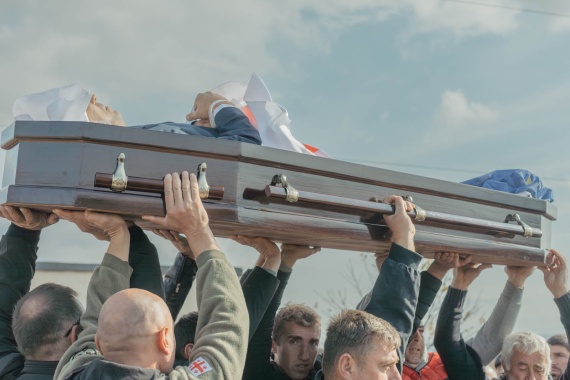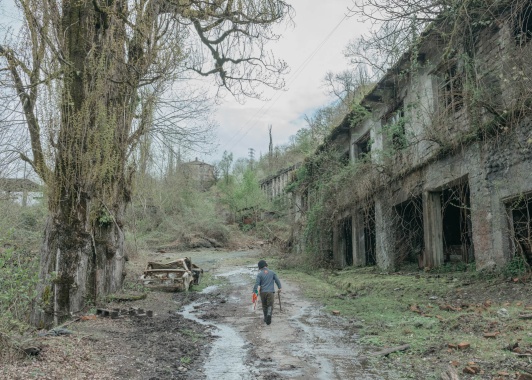Ksenia Ivanova: Between the Trees of the South Caucasus
A magnificent landscape filled with mighty trees, but here too lurk the dangers of a conflict over independence and nationality. The series by the Russian photographer provides insight into the social and political situation in the South Caucasus and, taking into account the current war in Ukraine, also poses questions about the future and the impact on the people living there.
Leaning on a walking stick, a woman makes her way across a large hall adorned with reminders of past glories: a crystal chandelier, columns and ornaments speak of an era defined by charm and glamour, which has left its mark in the atmosphere and on life. The woman has been living in the old sanatorium in Tskaltubo, Georgia, for thirty years; she is one of the many thousands displaced by the bloody war between Georgia and Abkhazia, which led to ethnic Georgians being banned from Abkhazia. The traumatic flight and tough years have lain heavy on her hunched shoulders. The sanatorium where she lives has, for a very long time, been a place to stay rather than a place of healing. Ksenia Ivanova took a picture of this Georgian woman for her “Between the Trees of the South Caucasus” series. For five years, from 2019 to 2023, the photographer observed the regions in the South Caucasus that are still plagued by unresolved conflict. In addition to Abkhazia, South Ossetia also declared its independence from Georgia; both regions are now part of a community of unrecognised states that are protected by Russia. In recent years, the situation in the South Caucasus has deteriorated further: The Russian military presence is increasing, Georgians have frequently been killed by Russian border guards; organised meetings between Abkhazia and Georgia have been suspended;; the Abkhazian community consider it treason to communicate with Georgia; and Georgians are completely forbidden to travel to Abkhazia. “The important thing for me was to tell the stories of people on both sides of the border, and to be a mouthpiece for them,” says Ivanova, speaking of her project. “A lack of dialogue does not lead to conflict resolution, so I wanted all voices to be heard. I believe that concrete stories from individuals are the most effective.”
“For me, the main trigger for this work was the need to investigate how the current conflict involving Russia continues to affect communities on different sides of the borders in the South Caucasus.”
The photographer brings the people together through the pictures she has taken on both sides of the divided land. Beyond the barb-wire fences erected by Russian soldiers, her images show the local inhabitants, their everyday lives, the youths and death. In a setting that is hard to surpass in terms of natural beauty, she places her protagonists in a pastel hue, as if the still-existent blue sky might represent a future blessing. The Black Sea, water falls and imposing mountains – in Abkhazian and Georgian stories, the land is likened to a paradise that God kept just for them. Until the war came. “I believe that, subconsciously, all these stories have influenced the imagery of my project,” Ivanova muses. “It was only after a time that I recognised the recurring motif of a lost paradise in the pictures, surrounded by a subtropical forest, which stands as a silent witness to the incredible violence.”
“Over the past three years, I’ve worked in different places in Georgia. Many Georgians from Abkhazia have settled in old Soviet sanatoriums, hotels, kindergartens and remote villages.”
More than half the population of pre-war Abkhazia had to leave their homes after the war in 1992/1993, and they are still unable to return. Their houses stand empty, some half destroyed by grenades. According to Ivanova, this emptiness is still palpable even after 30 years, part of a place that is isolated from the world, where time moves at its own pace – flowing more slowly and subject to its own laws.
Ksenia Ivanova’s series was submitted by Gonçalo Fonseca, one of this year’s group of 80 international LOBA nominators.
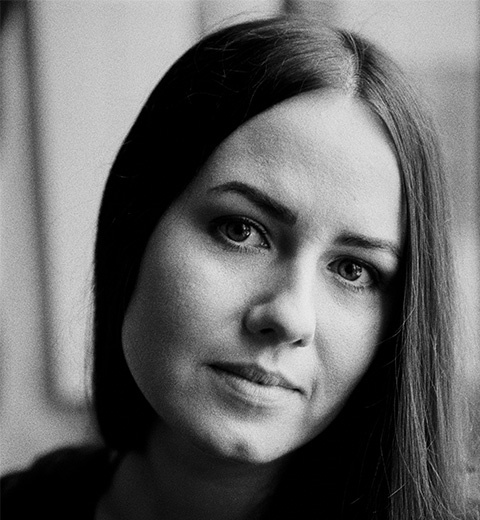
Ksenia Ivanova
The Russian-born (1990) documentary photographer has been commuting between Georgia and Germany for the past two years. Her work concentrates primarily on trauma and social conflict. She tries to build trusting relationships with people in her long-term projects. Ivanova has been recognised with the Lucie Foundation Documentary Award (2023) and a Picture of the Year Asia Award (2021); her series have been published in Spiegel and The Washington Post.
Portrait: © Maria Pavlovskaya

